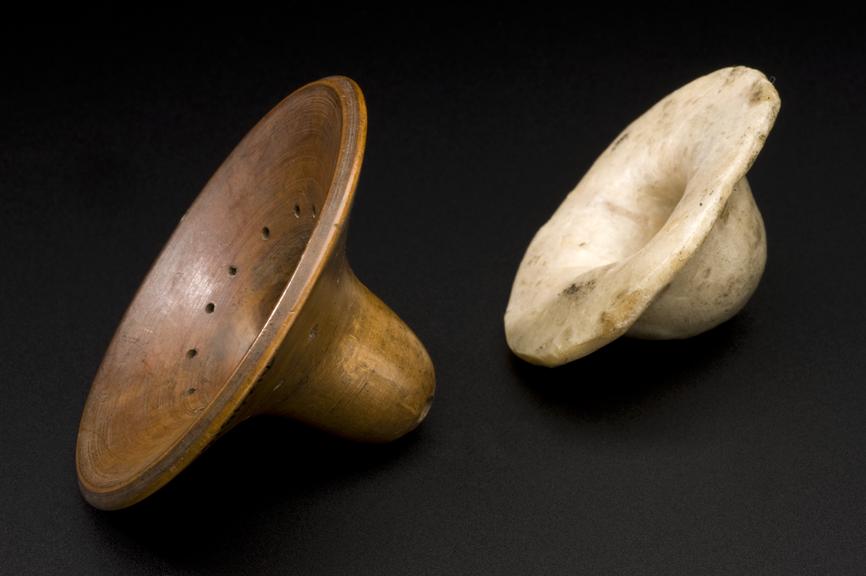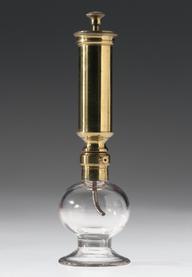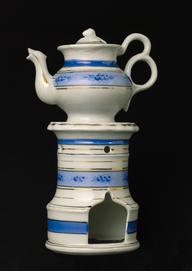


One of two beeswax nipple shields
Nipple shields protect nipples from teething babies. They also soothe sore nipples of breastfeeding mothers. They prevent nipples from flattening, contain leaking milk and help women who had trouble breastfeeding.
This beeswax example of a nipple shield, seen on the right, is alongside a wooden one (A124876) on the left. It is for protection rather than feeding because it has no holes through which milk could pass. Doctors of this period advised breastfeeding was best for infants. They said babies should be breastfed by the mother if possible or a wet nurse. Dried milk and condensed milk were introduced in the 1860s. However, doctors claimed dried milk caused diarrhoea, indigestion and rickets when fed to babies.
Details
- Category:
- Nursing & Hospital Furnishings
- Collection:
- Sir Henry Wellcome's Museum Collection
- Object Number:
- A606832/1
- Materials:
- beeswax
- Measurements:
-
overall: 30 mm 50 mm, .01kg
- type:
- nipple shield




